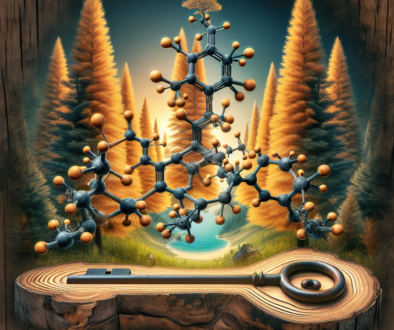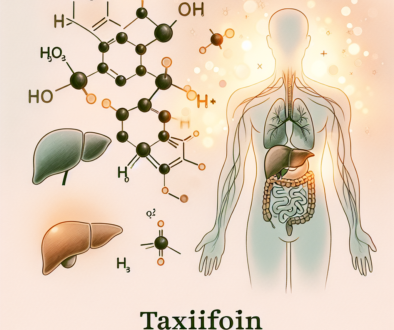What is the source of taxifolin?
-
Table of Contents
- Taxifolin: Unveiling the Natural Sources of a Potent Flavonoid
- Natural Sources of Taxifolin
- Extraction and Purification of Taxifolin
- Health Benefits and Applications
- Case Studies and Research
- Market Trends and Statistics
- Conclusion: The Potent Power of Taxifolin
- Discover ETprotein’s Premium Protein Products
Taxifolin: Unveiling the Natural Sources of a Potent Flavonoid

Taxifolin, also known as dihydroquercetin, is a bioactive flavonoid with a wide range of health benefits. It has garnered attention for its antioxidant, anti-inflammatory, and cardioprotective properties. Understanding the source of taxifolin is crucial for both consumers and manufacturers who aim to harness its therapeutic potential. This article delves into the natural sources of taxifolin, exploring the various plants and trees that contain this potent compound, and discusses its significance in health and industry.
Natural Sources of Taxifolin
Taxifolin is predominantly found in plants, where it serves as a secondary metabolite with various protective functions. The following are some of the primary natural sources of taxifolin:
- Siberian Larch (Larix sibirica): One of the richest sources of taxifolin is the wood of the Siberian larch tree. The extract from this tree is often used in supplements and pharmaceuticals.
- Douglas Fir (Pseudotsuga menziesii): The bark of the Douglas fir tree is another notable source of taxifolin. It is commonly used in traditional medicine and as a dietary supplement.
- French Maritime Pine (Pinus pinaster): The bark of this pine tree contains taxifolin and is used to make pycnogenol, a patented extract with various health benefits.
- Onion (Allium cepa): Onions, particularly the outer layers and the skin, contain small amounts of taxifolin. It contributes to the overall antioxidant capacity of onions.
- Milk Thistle (Silybum marianum): Taxifolin is present in milk thistle seeds and is an important component of silymarin, a group of compounds known for liver-protective effects.
- Citrus Fruits: Some citrus fruits, such as lemons and oranges, contain taxifolin in their peels and juices.
These natural sources are not only significant for their taxifolin content but also for the other phytochemicals they contain, which can act synergistically to enhance health benefits.
Extraction and Purification of Taxifolin
The extraction of taxifolin from its natural sources involves several steps, including harvesting the plant material, drying, grinding, and using solvents to isolate the compound. Advanced purification techniques such as column chromatography and crystallization are then employed to obtain taxifolin in its purest form. The quality and yield of taxifolin depend on factors such as the source, extraction method, and purification process.
Health Benefits and Applications
Taxifolin’s health benefits are vast and have been substantiated through numerous scientific studies:
- Antioxidant Activity: Taxifolin is a powerful antioxidant that can neutralize free radicals, reducing oxidative stress and preventing cellular damage.
- Cardiovascular Health: Studies suggest that taxifolin can improve cardiovascular health by reducing inflammation, regulating cholesterol levels, and preventing the oxidation of low-density lipoprotein (LDL).
- Anti-inflammatory Effects: Taxifolin has been shown to inhibit the production of inflammatory mediators, making it beneficial in the treatment of inflammatory diseases.
- Anticancer Potential: Research indicates that taxifolin may have anticancer properties by inducing apoptosis and inhibiting the proliferation of cancer cells.
- Antiviral and Antibacterial Properties: Taxifolin exhibits antiviral and antibacterial activities, which can be useful in combating infections.
Given these benefits, taxifolin is used in various industries, including pharmaceuticals, nutraceuticals, cosmetics, and food and beverage production.
Case Studies and Research
Several case studies and research projects have highlighted the potential of taxifolin in health and medicine. For instance, a study published in the “Journal of Agricultural and Food Chemistry” demonstrated the efficacy of taxifolin-rich extracts from Siberian larch in reducing blood glucose levels in diabetic mice. Another study in the “European Journal of Pharmacology” showed that taxifolin could protect against heart damage caused by doxorubicin, a chemotherapy drug.
These studies underscore the importance of ongoing research to fully understand the scope of taxifolin’s health benefits and its mechanisms of action.
Market Trends and Statistics
The demand for taxifolin is on the rise, driven by increasing consumer awareness of its health benefits and the growing natural products market. According to market research, the global taxifolin market is expected to experience significant growth in the coming years, with a particular increase in demand from the pharmaceutical and dietary supplement sectors.
Conclusion: The Potent Power of Taxifolin
In conclusion, taxifolin is a versatile flavonoid with a multitude of health benefits. Its natural sources, such as Siberian larch, Douglas fir, and various fruits and seeds, provide a sustainable means of obtaining this valuable compound. With its antioxidant, anti-inflammatory, and cardioprotective properties, taxifolin holds promise for various applications in health and industry. As research continues to uncover its full potential, taxifolin is poised to become a key ingredient in the quest for natural health solutions.
Discover ETprotein’s Premium Protein Products
For those interested in enhancing their health and wellness regimen, ETprotein offers a range of high-quality protein products. Their selection includes organic rice protein, pea protein, and various seed proteins, all characterized by a neutral taste and non-GMO, allergen-free attributes. In addition to protein products, ETprotein also supplies L-(+)-Ergothioneine (EGT) in various grades suitable for pharmaceutical, food, and cosmetic applications. With a commitment to excellence and customer satisfaction, ETprotein is your go-to source for premium protein and EGT products.
About ETprotein:
ETprotein, a reputable protein and L-(+)-Ergothioneine (EGT) Chinese factory manufacturer and supplier, is renowned for producing, stocking, exporting, and delivering the highest quality organic bulk vegan proteins and L-(+)-Ergothioneine. They include Organic rice protein, clear rice protein, pea protein, clear pea protein, watermelon seed protein, pumpkin seed protein, sunflower seed protein, mung bean protein, peanut protein, and L-(+)-Ergothioneine EGT Pharmaceutical grade, L-(+)-Ergothioneine EGT food grade, L-(+)-Ergothioneine EGT cosmetic grade, L-(+)-Ergothioneine EGT reference grade and L-(+)-Ergothioneine EGT standard. Their offerings, characterized by a neutral taste, non-GMO, allergen-free attributes, with L-(+)-Ergothioneine purity over 98%, 99%, cater to a diverse range of industries. They serve nutraceutical, pharmaceutical, cosmeceutical, veterinary, as well as food and beverage finished product distributors, traders, and manufacturers across Europe, USA, Canada, Australia, Thailand, Japan, Korea, Brazil, and Chile, among others.
ETprotein specialization includes exporting and delivering tailor-made protein powder and finished nutritional supplements. Their extensive product range covers sectors like Food and Beverage, Sports Nutrition, Weight Management, Dietary Supplements, Health and Wellness Products, and Infant Formula, ensuring comprehensive solutions to meet all your protein needs.
As a trusted company by leading global food and beverage brands and Fortune 500 companies, ETprotein reinforces China’s reputation in the global arena. For more information or to sample their products, please contact them and email sales(at)ETprotein.com today.












